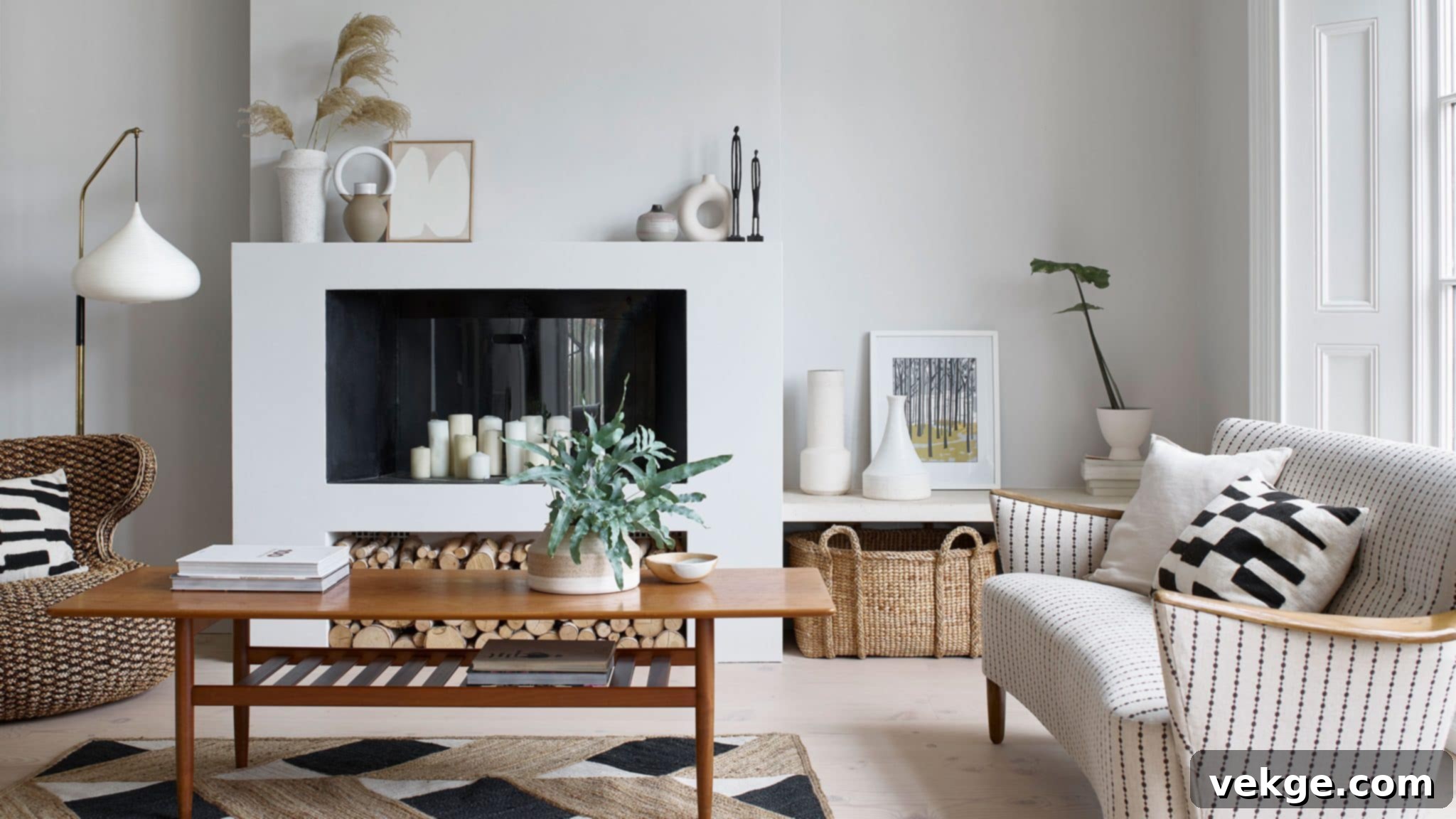The Ultimate Guide to Choosing the Perfect White Paint Color for Your Home
Choosing the right paint color for your home is an exciting yet often daunting task. The shades you select instantly set the mood, influence the ambiance, and define the overall aesthetic of your space. Among the vast spectrum of choices, white paint stands out as a universally versatile and timeless option, beloved for its ability to create serene, bright, and sophisticated interiors. However, the apparent simplicity of white can be deceptive; it is far from a one-size-fits-all solution.
White paint comes in an astonishing array of shades, each with unique undertones that profoundly impact how the color appears in a room. These subtle hints of other colors, often categorized as warm (leaning towards yellow, red, or orange) or cool (leaning towards blue, green, or gray), can transform a space from cozy and inviting to crisp and modern. Understanding these nuances is crucial for making an informed decision. This comprehensive guide will walk you through essential tips to help you navigate the world of off-white paint colors and find the perfect shade for your sanctuary.
1. Master the Art of Lighting Analysis
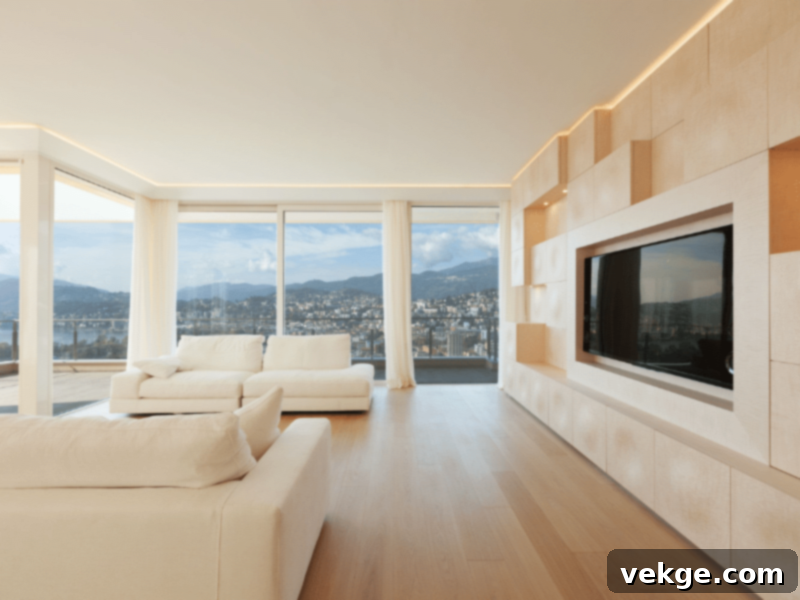
Lighting is arguably the most critical factor influencing how a paint color, especially white, will appear in your home. The same shade of white can look dramatically different depending on whether it’s illuminated by natural daylight or artificial light sources. It’s essential to evaluate your chosen white paint under all conditions to ensure it maintains its visual appeal throughout the day and night.
Consider the natural light in your room:
- North-facing rooms: These spaces often receive cooler, dimmer light, which can bring out the cool undertones (blue, gray) in white paints, making them appear starker. A white with a subtle warm undertone can help balance this out, adding a touch of coziness.
- South-facing rooms: Bathed in bright, warm light for most of the day, these rooms can handle cooler whites beautifully, preventing them from appearing too yellow or creamy. Warm whites here will feel even more inviting.
- East-facing rooms: Enjoying warm, bright morning light and cooler afternoon light, these rooms require a white that can transition gracefully.
- West-facing rooms: Experience soft morning light and intense, warm afternoon light. Whites here will shift dramatically throughout the day, so testing is crucial.
Artificial lighting also plays a significant role. Different light bulbs emit various color temperatures:
- Incandescent/Warm LED (2700K-3000K): These bulbs cast a yellowish glow, enhancing warm undertones in white paints.
- Cool LED/Fluorescent (3500K-4100K): These tend to have a bluer or whiter light, which can accentuate cool undertones or make warm whites appear dull.
- Daylight LED (5000K-6500K): Mimicking natural daylight, these can provide the truest representation of a white paint’s color, but might feel too sterile in some settings.
To truly understand how a white paint will behave, observe large samples on your walls at different times of the day, under both natural and artificial light. Take your time with this step; it’s the foundation of a successful paint choice.
2. Deciphering the Nuances of Undertones
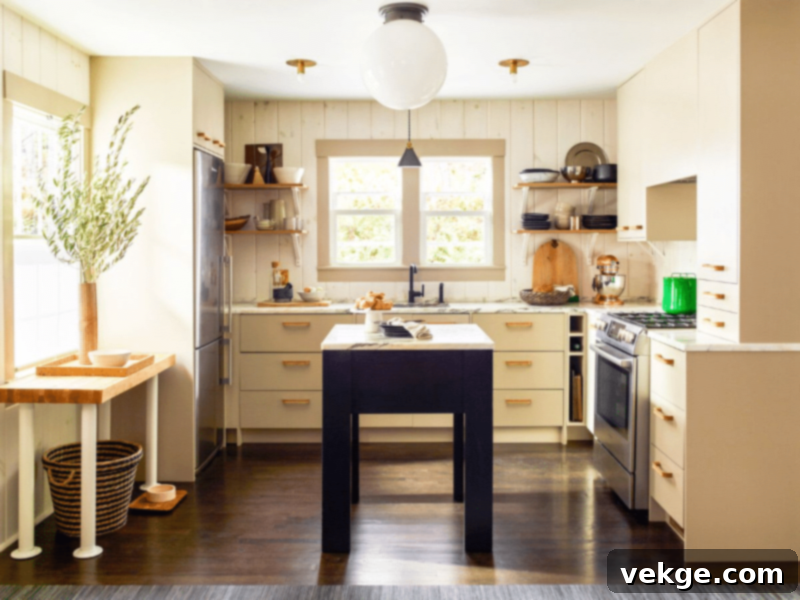
White might seem like a straightforward color, but its subtle undertones are what give each shade its unique character. These barely perceptible hints of other colors—primarily yellow, blue, green, or gray—are powerful. They dictate how the white interacts with lighting, other colors in the room, and ultimately, the overall mood. Selecting the right undertone is paramount to achieving your desired aesthetic.
Here’s a deeper look into common undertones:
- Warm Undertones (Yellow, Red, Orange): Whites with warm undertones evoke a sense of coziness, comfort, and traditional elegance. They can make a room feel more inviting and less stark, especially in cooler light conditions. Think creamy whites, ivory, or off-whites with a hint of beige. These pair beautifully with natural wood tones, earthy textures, and traditional decor styles.
- Cool Undertones (Blue, Green, Gray, Purple): Cool whites create a crisp, clean, and often modern aesthetic. They can make a room feel expansive, airy, and sophisticated. Consider whites with a subtle hint of blue-gray or a touch of green. These work well in contemporary spaces, alongside cool-toned furnishings, chrome accents, and minimalist designs.
- Neutral Undertones (Gray, Beige/Greige): These whites are often referred to as “true whites” or “balanced whites” because their undertones are minimal or evenly balanced, making them incredibly versatile. Greige (gray-beige) whites offer the best of both worlds, providing warmth without being overly yellow and coolness without feeling stark. They are excellent choices for open-plan living areas where various elements need to be unified.
To discern undertones, hold a paint swatch against a pure white sheet of paper or compare it with other whites. Look for the subtle color that emerges. This careful examination will help you make an informed decision that harmonizes with your existing furnishings and architectural elements.
3. The Value of Investing in High-Quality Paint
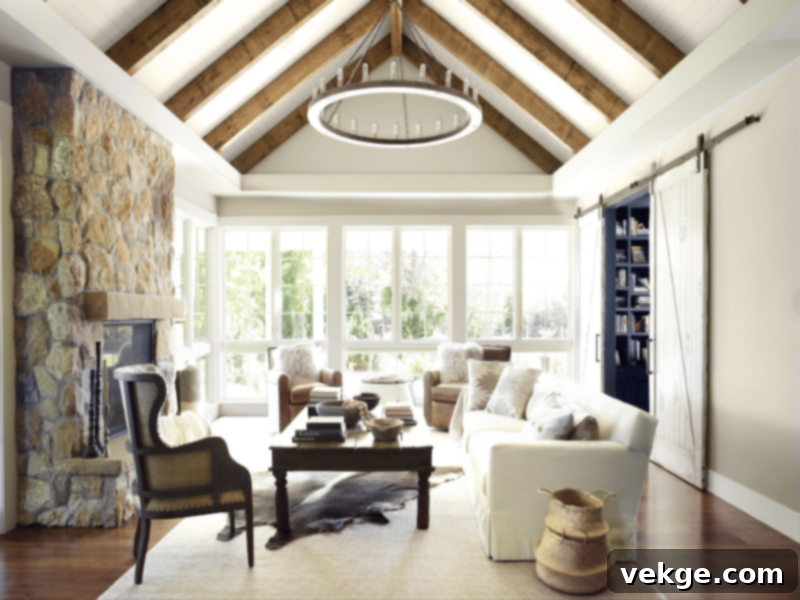
While it might be tempting to opt for a budget-friendly option, investing in high-quality paint is crucial, especially when working with white and off-white shades. Premium paints from reputable brands offer a multitude of benefits that justify the higher price tag, ensuring a superior, longer-lasting finish for your walls.
Key advantages of high-quality paint include:
- Superior Coverage and Pigmentation: High-quality paints contain more pigment and fewer fillers, resulting in better opacity. This means fewer coats are needed to achieve full coverage, saving you time and effort, and often money in the long run. For white, which can sometimes be tricky to apply evenly, this is a huge advantage.
- Durability and Longevity: Premium paints are formulated to be more durable and resistant to fading, chipping, and scuffing. They can withstand regular cleaning without losing their luster or color integrity, which is particularly important in high-traffic areas or homes with children and pets.
- Smoother Finish: Better quality paints tend to have a smoother, more even application, minimizing brush strokes and roller marks for a professional-looking finish. This also contributes to how the light reflects off the surface, enhancing the chosen white shade.
- Color Accuracy: Reputable brands are known for their consistent color formulas. This means the sample you test will accurately represent the final color on your walls, reducing the risk of unwelcome surprises.
- Low VOC Options: Many high-quality paints offer low or zero VOC (Volatile Organic Compounds) formulas, contributing to better indoor air quality and a healthier environment for your family.
Before making a purchase, read online reviews, seek recommendations from professional painters or interior designers, and consider the specific needs of your space. Remember, a beautiful and durable paint job is an investment in your home’s aesthetic and value.
4. Harmonizing with Trim and Ceiling
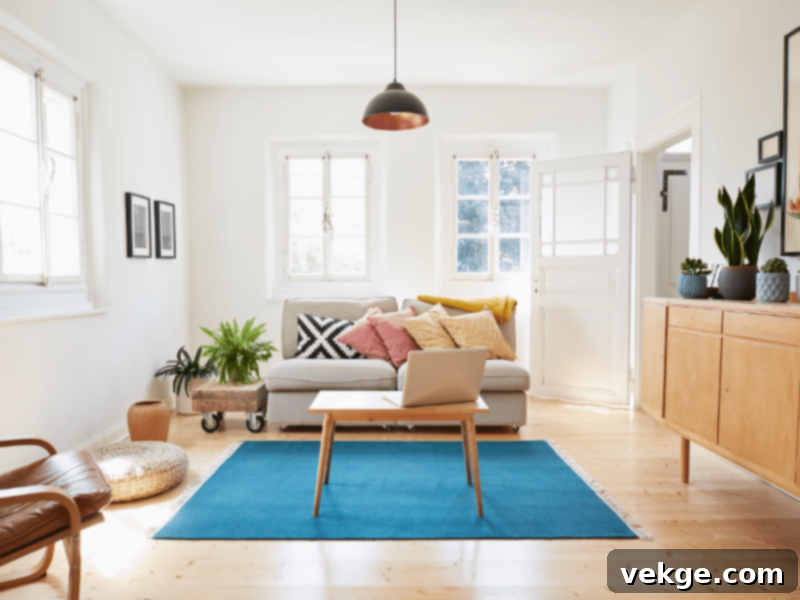
A room’s visual impact isn’t solely determined by the wall color. The three main elements—walls, trim (including door and window frames, baseboards, crown molding), and ceiling—work in concert to define the space. For a cohesive and polished look, it’s vital to consider how your chosen off-white wall color will interact with the trim and ceiling paints.
Here are several approaches to create harmony:
- Monochromatic Harmony: For a seamless, expansive feel, consider using the same white paint color on your walls, trim, and ceiling. To add subtle definition, vary the sheen: a matte finish on walls, eggshell or satin on trim for durability, and a flat finish on the ceiling. This creates a sophisticated, envelope-like effect that makes a room feel larger and more unified.
- Subtle Contrast: If your walls are a warmer off-white, you might choose a slightly crisper, cleaner white for the trim to provide a gentle contrast that highlights architectural details. Conversely, with a cooler off-white wall, a warm white trim can soften the edges. The key is to select whites with compatible undertones to avoid jarring clashes.
- Traditional Definition: For a more classic look, a brighter, often semi-gloss white trim against an off-white wall creates a distinct frame, emphasizing windows, doors, and baseboards. This approach works well in homes with intricate molding that you want to highlight.
- Ceiling Considerations: Ceilings are typically painted in a flat white to minimize imperfections and reflect light. A standard “ceiling white” is often a safe choice, but ensure its undertone doesn’t clash with your wall color. If your walls are a very specific warm or cool white, you might want to use a slightly diluted version of that wall color or a complementary white on the ceiling for a custom look.
Ultimately, the goal is to ensure that all three elements complement each other, creating a well-designed and aesthetically pleasing environment.
5. The Indispensable Role of Paint Samples
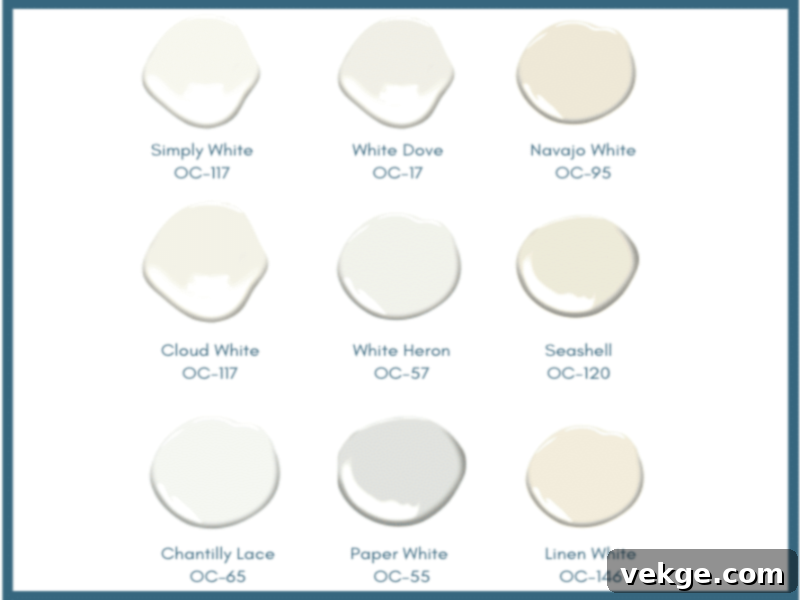
In the quest for the perfect white, small paint chips or digital representations can only take you so far. The true magic (or mayhem) of a white paint color unfolds when it’s applied to a large surface in your actual home environment. This is why testing physical paint samples directly on your walls is not just recommended, but absolutely essential.
Here’s how to effectively use samples:
- Go Beyond Small Swatches: Purchase sample pots of your top 2-3 white contenders. Paint large swatches (at least 2×2 feet) on several different walls in the room, especially those that receive varying amounts of light. This allows you to see how the color behaves on a larger scale and in different lighting conditions.
- Observe Throughout the Day: Don’t make a decision immediately. Live with the painted samples for at least a full day, preferably longer. Observe how each white looks in the morning light, afternoon sun, twilight, and under artificial lighting at night. What looks great at noon might feel too cool in the evening, or vice-versa.
- Compare Side-by-Side: Paint your chosen whites next to each other, but also leave a small unpainted strip between them. This helps your eye to judge each color individually without being influenced by the adjacent shade.
- Consider Existing Elements: Place furniture, textiles, and artwork near your samples to see how they interact. A white that perfectly complements your couch might clash with your favorite rug.
- Don’t Rush the Decision: The cost of a few sample pots is minimal compared to the expense and effort of repainting an entire room if you’re unhappy with the final choice. Take your time, trust your instincts, and ensure you truly love the white you select.
6. Thoughtful Coordination with Furniture and Decor

Your furniture and existing decor are integral parts of your home’s personality. Choosing an off-white paint color that harmonizes with these elements is key to creating a cohesive, well-designed space rather than a collection of disparate items. White, while often perceived as a neutral backdrop, can significantly enhance or detract from your furnishings depending on its undertones and how it’s balanced with the rest of the room.
Here’s how to ensure your white paint coordinates beautifully with your furniture and decor:
- Understand Your Furniture’s Undertones: Just as white paint has undertones, so do your wooden furniture, upholstery, and metal accents. A warm-toned wood (like oak or cherry) or fabrics with red/orange hues will generally pair better with warm off-whites. Cooler metals (like chrome or brushed nickel) or fabrics with blue/green tones will be enhanced by cool off-whites.
- Collect Fabric and Material Samples: Before painting, gather swatches of your upholstery, drapery, rug, and even a small piece of wood or metal from your furniture. Place these alongside your white paint samples on the wall. This visual comparison will immediately highlight any clashes or complementary pairings.
- Create Balance: If your furniture is predominantly warm (e.g., dark wood, leather), a crisp, cool white wall can offer a striking contrast, making the furniture pop. Conversely, if your furniture is sleek and modern with cool tones, a warm off-white on the walls can soften the space and prevent it from feeling too sterile. White can act as a bridge, unifying diverse pieces.
- Consider the Overall Style: A rustic farmhouse aesthetic might lean towards creamy, distressed whites, while a minimalist Scandinavian style often thrives on crisp, slightly cool whites. Ensure the white you choose reinforces the intended design style of your home.
- Observe the Dynamic in All Lights: As with the paint itself, observe how your furniture and decor appear alongside the paint samples under both natural and artificial lighting. The interaction between light, paint, and furnishings is dynamic and can shift throughout the day.
By thoughtfully considering your existing elements, you can select an off-white that truly elevates your home’s interior design.
7. The Wisdom of Seeking Expert Advice

When the myriad shades of white become overwhelming, or you’re simply unsure how to achieve a specific look, seeking expert advice can be an invaluable step. Interior designers and professional color consultants possess an in-depth understanding of color theory, light dynamics, and how different shades interact within a space. Their expertise can save you time, money, and the frustration of making costly mistakes.
Here’s why consulting a professional can make a difference:
- Deep Color Theory Knowledge: Experts understand the subtle nuances of undertones, how colors behave under various lighting conditions, and their psychological impact. They can pinpoint the exact white that will complement your existing decor, architectural style, and personal preferences.
- Personalized Recommendations: A professional will take into account your specific home’s natural light, fixed elements (flooring, cabinetry, countertops), furniture, and desired mood for each room. They don’t just pick a pretty white; they select one that works harmoniously within your unique environment.
- Avoiding Costly Mistakes: Repainting an entire room is a significant undertaking. An expert’s guidance can help you avoid choosing a white that turns out too yellow, too blue, or simply doesn’t feel right, saving you from the expense and hassle of redoing the job.
- Achieving Desired Atmosphere: Whether you’re aiming for a serene sanctuary, a vibrant gathering space, or a sophisticated office, a color consultant can help translate your vision into a tangible color scheme, suggesting whites that evoke the precise atmosphere you desire.
- Access to Exclusive Resources: Designers often have access to a broader range of samples, specialized tools, and knowledge about paint brands and finishes that may not be readily available to the general public.
Even a one-hour consultation can provide immense clarity and direction, making the white paint selection process significantly smoother and more enjoyable. Don’t hesitate to leverage professional knowledge for a truly stunning outcome.
Conclusion
Choosing the right off-white paint color for your house or room is a journey that, while detailed, is incredibly rewarding. It demands a systematic and thoughtful approach, moving beyond the perception of white as a simple, singular color. By carefully considering the impact of natural and artificial lighting, understanding the subtle power of undertones, investing in quality paint, and harmonizing with your trim, ceiling, and existing decor, you can achieve a visually pleasing and coherent result.
Remember, warm undertones create a cozy, inviting atmosphere, while cool undertones lend a crisp, modern feel. The secret lies in testing samples extensively and even seeking expert advice when needed. Embrace the complexity of white, and you’ll unlock its incredible potential to transform your home into a beautiful and personalized sanctuary.
Which off-white color would you like to have in your room? Let us know in the comment section below!
Frequently Asked Questions About Choosing White Paint
Which Shade of White is Best for My Home?
There isn’t a single “best” shade of white, as the ideal choice heavily depends on your home’s unique characteristics. Factors like natural light exposure (north, south, east, west), existing decor, furniture undertones, and your personal style all play a crucial role. For example, a crisp, cool white might be perfect for a modern, sun-drenched space, while a soft, creamy off-white could bring warmth to a north-facing room with traditional furnishings. Some popular and highly versatile white paint colors often recommended by designers include Sherwin Williams Pure White, Benjamin Moore White Dove, Behr Polar Bear, and Valspar Promenade. Always test samples on your walls to see how they truly appear in your specific environment before committing to a full purchase.
Is Off-White a Good Color for The Bedroom?
Absolutely, off-white is an excellent choice for a bedroom! Its versatility allows it to create a serene and calming atmosphere, which is ideal for a restful space. Off-whites with warm undertones (like a hint of cream or beige) can make a bedroom feel exceptionally cozy and inviting, perfect for unwinding. Conversely, off-whites with cool undertones (such as a touch of gray or blue) can lend a fresh, clean, and modern feel, promoting a sense of spaciousness. Being a neutral and clean base, off-white acts as a wonderful backdrop, allowing you to introduce color through bedding, curtains, and artwork, ensuring the room remains adaptable to changing styles. It also beautifully offsets darker furniture and blends seamlessly with lighter decor elements.
How Do I Find the Right White Paint Color for My Space?
Finding the right white involves a methodical approach. First, consider the natural and artificial lighting in your room, as light dramatically alters how white appears. Identify the undertones present in your existing furniture, flooring, and fixed elements to ensure your chosen white complements them. Decide whether you prefer a warm (yellow, red, orange hints for coziness) or cool (blue, green, gray hints for crispness) undertone. Most importantly, always purchase several large paint samples and apply them directly to your walls. Observe these samples at different times of the day and night to see how they react to various light sources. This practical testing step is crucial for making an informed and confident decision.
Do White Walls Make a Room Look Bigger?
Yes, white walls are a highly effective choice for making a room appear larger, brighter, and more expansive. This is primarily due to white’s ability to reflect light rather than absorb it. When natural light floods a room with white walls, it bounces around, illuminating every corner and visually pushing the walls outward. To maximize this effect, consider using white paints with a satin or eggshell finish, as these have a subtle sheen that further enhances light reflection compared to a matte finish. Pairing white walls with lighter-colored trim and ceilings, or even painting them the same white with varying sheens, can create a seamless, uninterrupted flow that contributes to the illusion of a more spacious environment.
